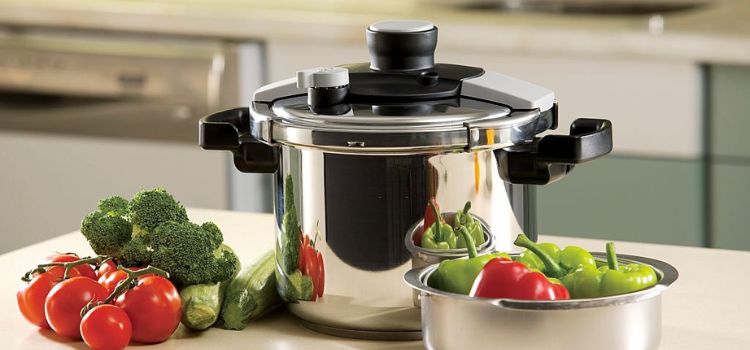As an Amazon Associate, I earn from qualifying purchases

Pressure cookers are renowned for their efficiency in the kitchen, making cooking faster and more convenient. But have you ever wondered if pressure cookers can be used for more than just cooking meals? In this article, we’ll dive into the exciting world of resin art and explore the possibilities of using a pressure cooker for resin projects. We’ll address the burning question: Can you use a pressure cooker for resin? So, let’s embark on this creative journey and uncover the potential of combining pressure cookers and resin!
Can You Use a Pressure Cooker for Resin?
Resin art has gained immense popularity for its captivating aesthetics and versatility. Enthusiasts are always on the lookout for innovative techniques to enhance their resin creations. Using a pressure cooker is an unconventional approach that has piqued the interest of many artists. The process involves placing resin-coated objects inside a pressure cooker and subjecting them to controlled heat and pressure. The idea behind this technique is to accelerate the resin curing process, resulting in unique and intriguing patterns. While it’s not a traditional use for pressure cookers, it has gained traction due to the stunning effects it can produce.
Exploring the Creative Potential
The marriage of a pressure cooker and resin opens up a realm of artistic possibilities. Here’s how it works and the potential benefits it offers:
1. Faster Curing Times
Resin curing can be a time-consuming process, often requiring hours or even days to fully set. By using a pressure cooker, the combination of heat and pressure can significantly expedite the curing time. This allows artists to create intricate resin designs in a fraction of the time it would normally take.
2. Unique Patterns and Textures
The application of pressure and heat within the pressure cooker can lead to the formation of captivating patterns and textures in the resin. The variations in pressure and temperature can result in unexpected yet mesmerizing designs that are difficult to achieve through traditional methods.
3. Reduced Bubbles and Imperfections
One common challenge in resin art is the presence of air bubbles and imperfections in the final piece. The pressurized environment inside the cooker helps minimize these issues by compressing the resin and forcing air bubbles to the surface, resulting in a smoother finish.
4. Enhanced Color Blending
When different pigments and colors are mixed in resin, achieving a seamless blend can be tricky. Pressure cooking can aid in better color integration, creating harmonious and fluid transitions between different hues.
5. Experimentation and Innovation
Artists thrive on experimentation, and using a pressure cooker for resin opens up new avenues for innovation. This technique encourages artists to step out of their comfort zones and explore unconventional methods to create distinct and remarkable resin art.
Learn About Frying Pan vs Saute Pan – Comparison in 2023
Step-by-Step Guide: Using a Pressure Cooker for Resin
If you’re intrigued by the idea of using a pressure cooker, here’s a step-by-step guide to getting you started:
1. Gather Your Materials:
- Resin and hardener
- Pressure cooker
- Resin-coated objects
- Thermometer
- Protective gear (gloves, goggles, apron)
2. Prepare the Pressure Cooker:
- Ensure the pressure cooker is clean and free from any food residues.
- Place a heat-resistant rack or trivet at the bottom to elevate the resin-coated objects.
Coat the Objects:
- Apply resin to your chosen objects as you would in traditional resin art.
Arrange the Objects:
- Place the resin-coated objects on the trivet inside the pressure cooker.
Controlled Heating:
- Close the pressure cooker and set the heat to a low and gradual temperature.
- Utilize a thermometer to monitor the temperature and prevent excessive heating.
Gradual Pressure Increase:
- As the temperature rises, the pressure inside the cooker will also increase gradually.
- Avoid rapid pressure changes, as this could cause the resin to bubble excessively.
Monitor and Adjust:
- Keep a close eye on the process, adjusting the heat and pressure as needed.
- Aim for a balance between heat and pressure to achieve optimal results.
Cool Down and Release Pressure:
- Once the desired curing time is reached, turn off the heat and allow the pressure cooker to cool down naturally.
- Carefully release any built-up pressure according to the manufacturer’s instructions.
Inspect Your Creations:
- Open the pressure cooker and take out your resin-coated objects.
- Observe the patterns, textures, and colors that have developed during the process.
(FAQs)
It’s recommended to use a pressure cooker that can maintain a consistent and controlled temperature. Electric pressure cookers with adjustable settings are often a better choice.
While the technique can yield stunning results, there are risks associated with using heat and pressure. It’s important to follow safety precautions and manufacturer guidelines.
The size of the pressure cooker limits the size of the projects you can undertake. Smaller objects tend to yield better results due to uniform pressure distribution.
It’s possible that the pressure cooker may retain a faint resin odor. Consider using a designated pressure cooker for resin art to avoid mixing scents with food.
While other curing methods exist, using a pressure cooker offers a unique approach that can result in distinct patterns and textures not easily attainable through traditional methods.
Conclusion
In the realm of creative experimentation, combining a pressure cooker with resin art showcases the innovative spirit of artists. While using a pressure cooker for the resin is not without its challenges and risks, the potential for producing captivating and unique creations is undeniable. By following proper safety precautions, exploring the technique, and embracing unexpected outcomes, resin artists can unlock a new dimension of artistic expression. So, if you’re ready to embark on a journey of exploration and creativity, why not give the pressure cooker resin technique a try?
Leave a Reply